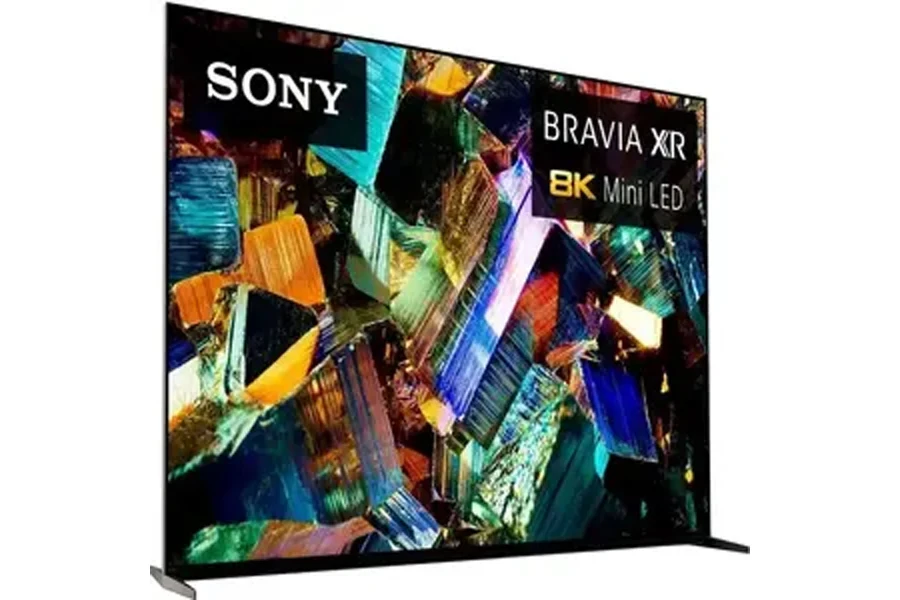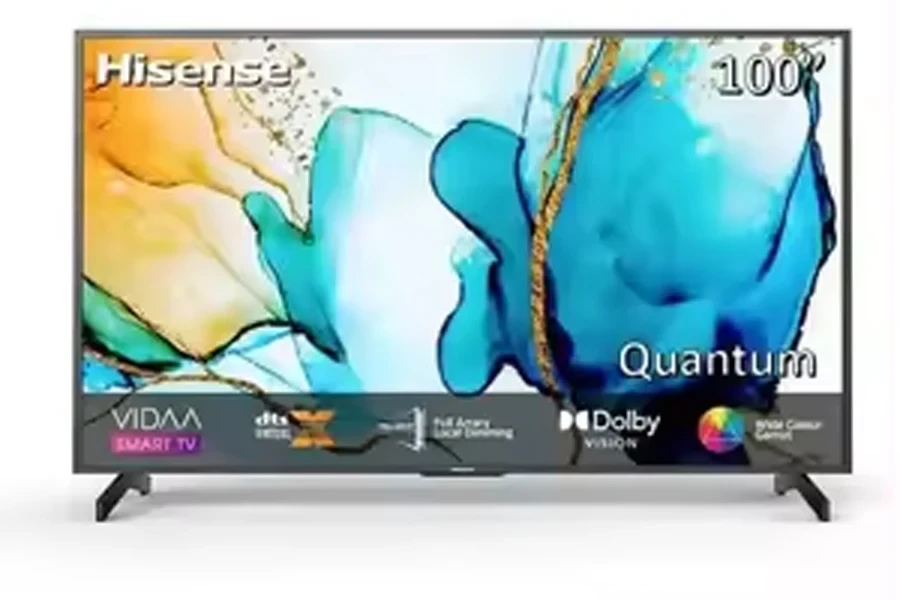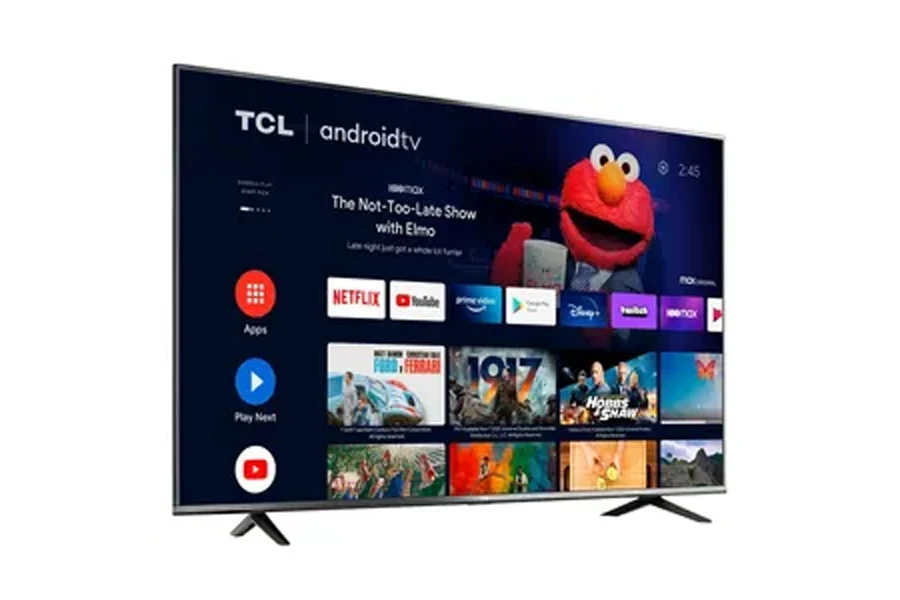Table of Contents
● Introduction
● Market overview
● Key technology and design innovations
● Top-selling models driving market trends
● Conclusion
Introduction
QLED technology is transforming the television landscape by delivering unparalleled color accuracy and exceptional brightness that elevate the viewing experience to new heights. As the market continues to grow, these displays are gaining popularity for their ability to offer vibrant visuals and energy efficiency. This introduction explores the expansive growth and innovation within the QLED TV market, detailing key technological advancements and analyzing top-selling models. From the living rooms of avid movie watchers to the dynamic setups of hardcore gamers, QLED TVs are setting new standards for what consumers can expect from high-end displays. Join us as we delve deeper into the mechanics, market trends, and leading models driving the success of QLED technology.
Market overview

The QLED TV market is currently poised for significant growth, valued at USD 4.50 billion in 2023 and projected to soar to USD 10.19 billion by 2030, according to Virtue Market Research. This remarkable expansion, with a compound annual growth rate (CAGR) of 12.39% from 2024 to 2030, reflects a burgeoning demand driven by technological innovations and increased consumer adoption. QLED technology, distinguished by its use of quantum dots for superior brightness and color accuracy, is rapidly gaining ground against traditional LCDs and rival OLED technologies, capturing a growing share of the global TV market.
Market dynamics are shifting as QLED TVs carve out a significant niche. These displays are not only preferred for their vibrant colors and deep blacks but also for their energy efficiency and longevity, appealing widely across both consumer electronics and specialized sectors such as medical devices. The competition with OLED is fierce, particularly as OLEDs offer superior contrast ratios and faster response times. However, QLED’s broader color spectrum and brightness levels make it highly competitive, especially as manufacturers like Samsung continue to innovate and drive down costs.
Emerging trends highlight a shift towards larger display sizes and integration of smart features, reflecting the consumer’s increasing interest in immersive viewing experiences and connectivity. As the technology matures, we are witnessing a reduction in prices and an increase in adoption, suggesting a bright future for the QLED market as it continues to evolve and respond to consumer demands and environmental standards.
Key technology and design innovations
Quantum dot technology: enhancing color and clarity
Quantum Dot technology is at the heart of what sets QLED TVs apart from other display technologies. These nanocrystals are activated by the TV’s backlight to emit very specific color frequencies. Unlike traditional LED displays that use filters to produce colors, quantum dots emit pure light frequencies, resulting in more vibrant and accurate colors. This ability to control light at such a precise level means that QLED TVs can cover a significantly broader color spectrum—up to 100% color volume in the DCI-P3 Hollywood standard color space, as reported by industry leaders.
Sleek design and user-centric features
QLED TVs are not only about internal technology but also about external user experience enhancements. The latest models boast ultra-thin designs, some as slim as 15mm, which allow for more discreet integration into living spaces. Ambient Mode is another standout feature, transforming the idle TV screen into a piece of art that can display decorative content, personal photos, or blend into the living space by mimicking the pattern on the wall behind it. This fusion of design and technology exemplifies the modern approach to consumer electronics, where devices are meant to complement lifestyle and décor.
Energy efficiency and environmental impact
In the realm of energy consumption, QLED TVs have made significant strides forward. The use of quantum dots has been particularly beneficial, as these materials require less backlighting than conventional LCD displays. This reduction in energy usage not only helps in lowering electricity bills but also contributes to a smaller carbon footprint. Advanced power management features in these TVs further enhance their energy efficiency, adjusting brightness based on ambient light conditions to reduce unnecessary power use.
Backlight advancements: Mini-LEDs and viewing quality
The introduction of Mini-LED technology marks a significant advancement in backlight solutions for QLED TVs. Mini-LEDs, much smaller than traditional LEDs, offer finer control over dimming zones and improve the uniformity of brightness and color across the screen. This technology can support thousands of dimming zones, which drastically reduces blooming (unwanted light spill around bright objects on dark backgrounds) and enhances contrast. This precise control enables deeper blacks, brighter whites, and a more dynamic range, providing a more immersive viewing experience.
Top-selling models driving market trends
Samsung QN90C Neo QLED

The Samsung QN90C Neo QLED stands at the pinnacle of QLED technology, known for its exceptional picture quality driven by Quantum Matrix Technology Pro. This technology utilizes ultra-fine, precisely controlled Quantum Mini LEDs that dramatically increase the luminance scale to reveal intricate details even in very dark or very bright images. The QN90C is equipped with Samsung’s Neo Quantum Processor 4K, enhancing upscaling capabilities that transform all content to impressive 4K resolution. Notably, this model boasts a peak brightness of around 2,000 nits, which makes it good for HDR content, offering a 120Hz refresh rate and features like FreeSync Premium Pro to reduce tearing during gaming sessions. Its comprehensive smart features, powered by Tizen OS, provide seamless access to streaming services and a customizable user interface.
Sony Bravia X93L Mini-LED

The Sony Bravia X93L Mini-LED, often compared to QLEDs for its similar performance characteristics, employs Sony’s advanced Full Array Local Dimming technology which enhances contrast by independently adjusting light areas across the screen. This model shines with its X1 Ultimate Processor, optimizing image quality for super detailed and smooth visuals, complemented by Sony’s Triluminos Pro technology that expands the color spectrum beyond conventional TV displays. With a peak brightness just shy of 1,800 nits and support for Dolby Vision, HDR10, and HLG, the X93L offers a bright and vibrant viewing experience. It also supports next-gen gaming features such as 4K at 120Hz refresh rate and Variable Refresh Rate (VRR), making it highly suitable for dynamic gaming sessions.
TCL QM8 QLED 4K Mini-LED

TCL’s QM8 QLED 4K Mini-LED model is remarkable for its class-leading brightness levels, reaching up to 2,500 nits, which significantly enhances HDR performance for a stunning visual impact. This model uses thousands of Mini-LED backlights to provide more precise local dimming, which sharpens contrast and deepens blacks. TCL integrates Quantum Dot technology to achieve superior color volume and purity, offering near-complete DCI-P3 color space coverage. Enhanced with THX Certified Game Mode, the QM8 ensures optimized gaming with low input lag and quick response times, maintaining vivid colors and deep contrasts during fast-paced games.
Hisense U8K ULED TV

The Hisense U8K ULED TV is noted for combining ULED technology with Quantum Dots to provide a superior contrast ratio and brighter highlights, delivering an impressive peak brightness of around 2,000 nits. Hisense’s proprietary Hi-View Engine drives real-time image processing and scene-by-scene optimization to produce clear and detailed pictures. The U8K supports Dolby Vision IQ and HDR10+, adapting the HDR performance based on the content and lighting conditions in the room. It also features Game Mode Pro, which reduces input lag and enhances responsiveness—a boon for gamers seeking precision and quick reflex visuals.
TCL Q7 QLED

Lastly, the TCL Q7 QLED offers an excellent balance of performance and price, with its standout feature being the AiPQ Engine that intelligently optimizes color, contrast, and clarity for an unmatched viewing experience. This model achieves a high brightness level, enhancing visibility in various lighting conditions and supporting a vivid HDR experience. The TCL Q7 also supports a 120Hz refresh rate and HDMI 2.1, ensuring it is future-proof for the latest console and PC games. It’s an ideal choice for those who want the vibrant color performance of a QLED with practical features that enhance both daily TV watching and gaming scenarios.
Conclusion
In conclusion, QLED TVs represent a significant advancement in television technology, combining quantum dot precision with powerful backlighting solutions to push the boundaries of color accuracy and brightness. As we’ve explored, the market is experiencing robust growth, driven by continuous innovations and a shift towards larger, smarter displays that cater to a diverse range of consumer needs. From the high-performance Samsung QN90C to the budget-friendly TCL Q7, these models exemplify the blend of innovation and consumer value, setting new standards for quality and performance. As QLED technology continues to evolve, it’s clear that its impact on the future of television is profound, promising viewers an unparalleled visual experience that elevates everyday viewing to cinematic heights.




